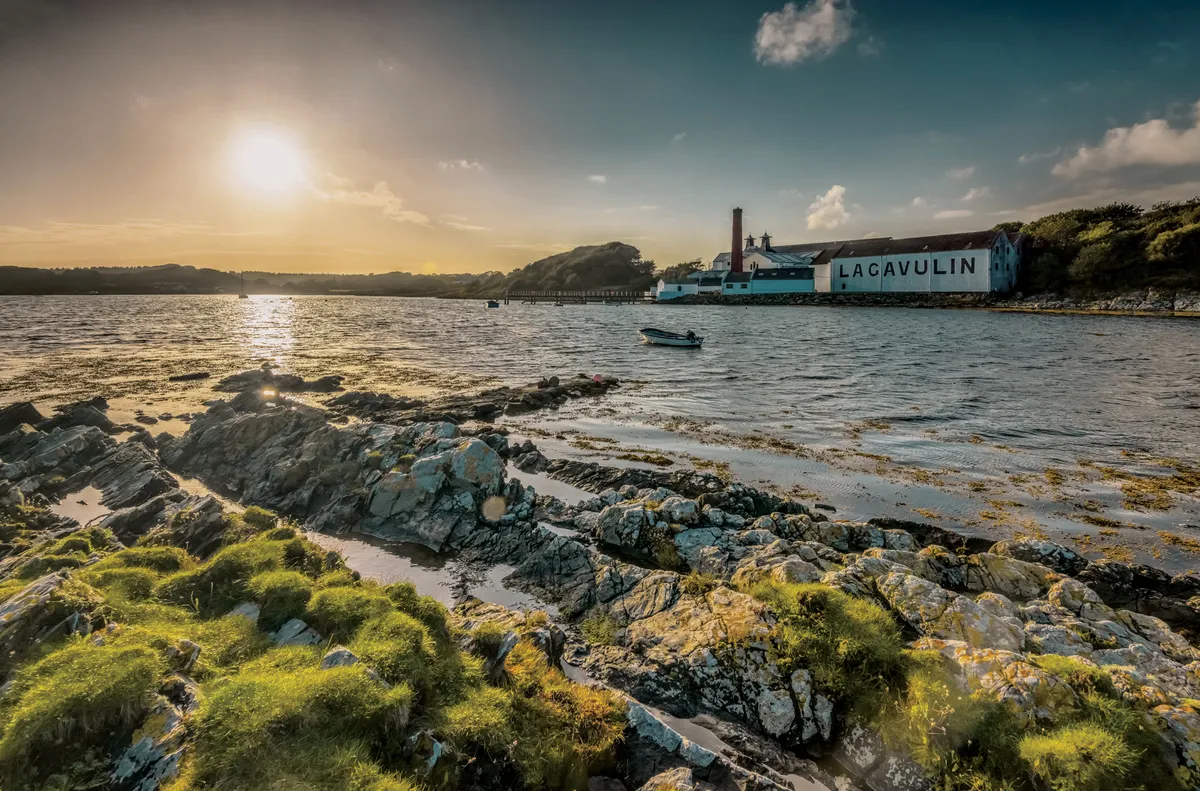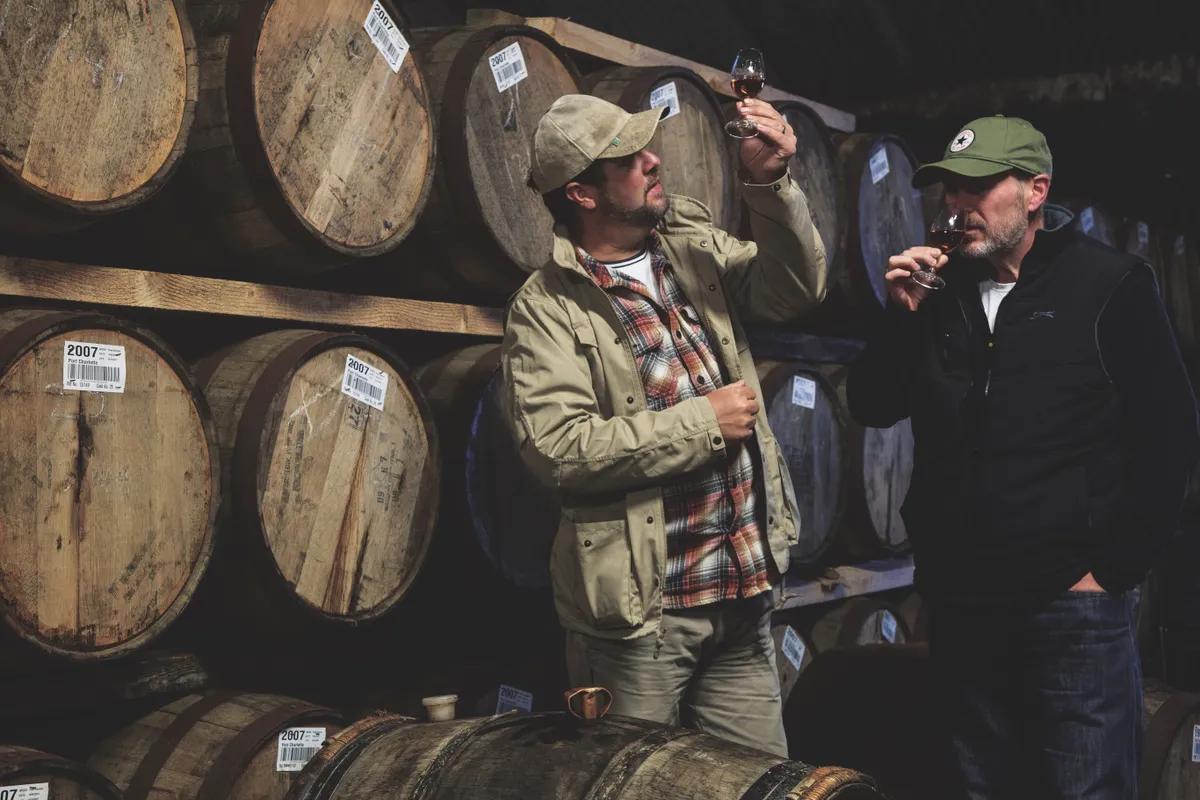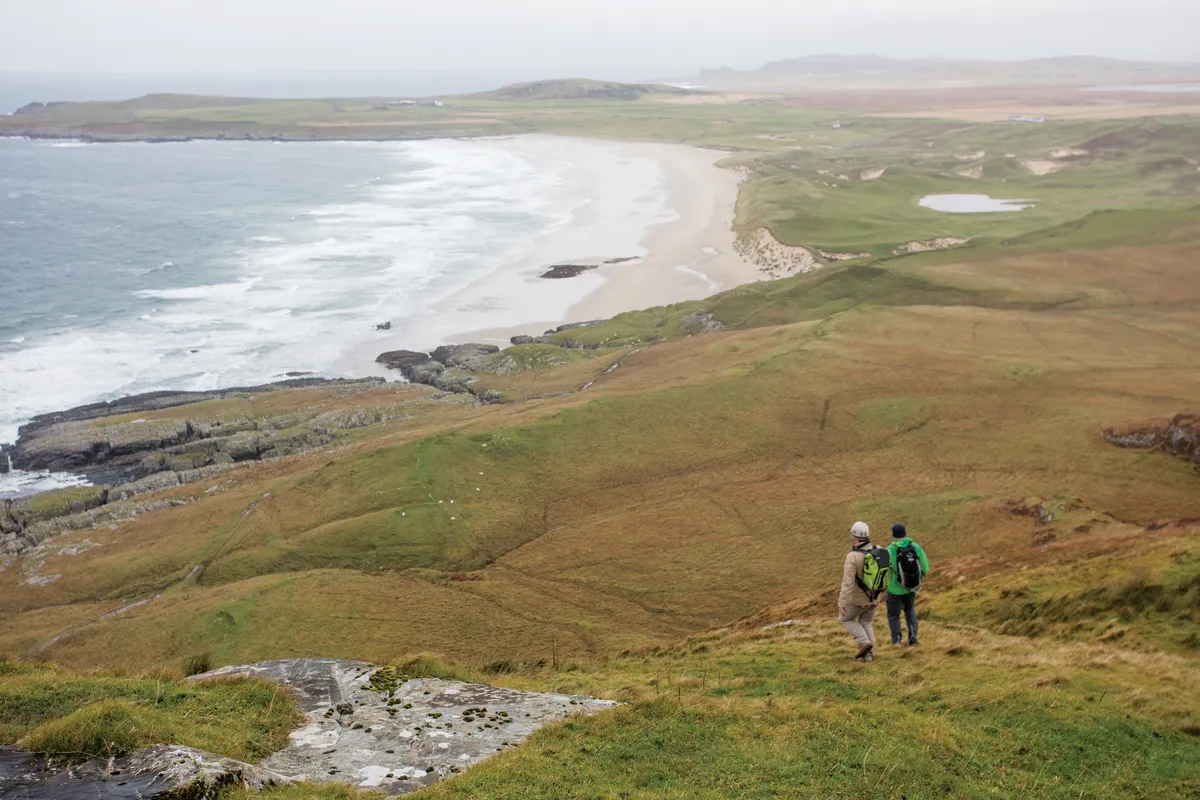The story of single malt Scots whisky is an intoxicating tale – a heady mix of myths and legends, swirling beneath a dense veil of Scotch mist. One thing is certain: some of the most distinctive whiskies in Scotland emanate from the west-coast island of Islay, home to eight (soon to be nine) of Scotland’s 98 active distilleries.
So what special ingredient makes an unassuming little island, accounting for less than one-thousandth of Scotland’s total landmass, become home to almost a tenth of the nation’s distilleries, producing some 25 million litres of spirit every year?
Which Scottish island is famous for malt whisky?
The ferry leaves the mainland from the pier at Kennacraig and threads its way down the narrow channel into the Sound of Jura towards the island of Islay. From the deck there are splendid views: west to the Paps of Jura, east to Goatfell on Arran. On the horizon to the south-west, passengers occasionally catch a glimpse of Northern Ireland’s Antrim coast through the haze. This proximity to the Emerald Isle might be our first clue to the excellence of Islay whisky. The evidence suggests the Irish were the first to distill spirits, and it stands to reason that their near neighbours on Islay might have been the first Scots to learn the technique from them. Perhaps Islay distillers are so good at making whisky now because they had a head start on the rest of Scotland.
This dense layer of peat is another clue to Islay’s whisky-making prowess.
Beyond Jura our destination appears before us. By west-coast standards, Islay (pronounced ‘eye-la’) is only modestly endowed in scenery. It’s largely low-lying, with a nondescript interior dominated by blanket bog. But this dense layer of peat is another clue to Islay’s whisky-making prowess. First, on an island with few trees, it provides a reliable source of fuel. Second, it acts as both sponge and filter, purifying the prodigious amounts of rainfall. The climate helps, too. Frosts are rare, and in the west of the island there is soil rich enough to grow barley. Heat, clean water, grain: the three basic elements of whisky.
The promise of peat
Soon we can make out the first of Islay’s distilleries: low-lying maltings and warehouses hugging the coastline, their names stencilled in huge black letters on the whitewashed walls. Ardbeg, Lagavulin, Laphroaig: they seem as rooted in the landscape as the quartzite mountains that rise up behind them. Until the mid-20th century, grain and casks arrived by boat and the bulk of the whisky they produced was exported by sea, so the black lettering served as a navigational aid.

From Islay’s Port Ellen, where the ferry docks, it’s a short hop to the ‘big three’ distilleries on the south coast, but the best bits of Islay lie further afield: across the ‘moss’ – the grassy, wet fields – to the heart of the island, then onwards to the west coast. Beside the High Road over the moss, we see telltale steps in the blanket bog where the peat had been harvested as fuel. Once dried, the slow-burning turves impart a distinctive smoky flavour to the drying barley, to produce the signature ‘peated’ Islay malt.
The bustling little port of Bowmore is home to the island’s oldest distillery, named after the town. Here, Scotland’s longest-lived maturation warehouse sits hard by the sea, with the deepest chambers below sea level at high tide.
Across the saltwater inlet lies the Rhinns of Islay, a peninsula of ancient rock jutting south-west into the Atlantic. It’s an atmospheric place, where choughs wiffle and soar above the gnarly seacliffs standing guard over pristine and deserted beaches. We climb to the radar listening station at the summit of Cnoc nam Muchlach (known locally as Granny’s Rock) and admire the views stretching north over the immaculate sands of Machir Bay to the rugged headlands of the northern Rhinns.
From this vantage point, we can see Islay’s newest distillery: Kilchoman, where my travelling companion Phil bought one of the early casks of liquor shortly after the distillery opened in 2005. Phil’s here to check how his cask is maturing, so we pop into the Kilchoman visitor centre to collect a couple of sample bottles straight out of the barrel. “It’s got potential,” Phil reckons, “but I’d say it needs a few more years yet.” So Phil agrees to a plan to transfer the whisky to a port or sherry cask for a couple of years to give it more depth and complexity.
Elemental flavours
On the sheltered east coast of the Rhinns is the pretty little fishing village of Port Charlotte and just up the road, the distillery of Bruichladdich. Using traditional methods honed over 135 years, Bruichladdich produces a light, refined and sweet spirit that balances the astringent peatiness of the southern distilleries. Distillery guide Kathryn MacNiven invites us into one of the warehouses for a dram of 13-year-old Port Charlotte whisky.

The dark and dusty vaults are suffused with a heady mix of delicate aromas: wood, sherry, spirit. The ageing process gives the liquor its colour and influences the flavour: the barrels once contained port, sherry, bourbon or, in this case, red wine from Château Mouton Rothschild. At 57 per cent alcohol-by-volume, ‘cask strength’ whisky deserves respect, but a splash of cool spring water releases the subtleties of the spirit. If you’re not on foot and are planning to sample a few whiskies, it’s worth knowing Scotland has strict drink-driving laws, so even the tiniest dram could be enough to put you over the limit. Public transport is limited on the island, but taxis are plentiful.
The dark and dusty vaults are suffused with a heady mix of delicate aromas: wood, sherry, spirit.
With the sun dipping towards the horizon, we head for the jewel in the Rhinns’ crown: Saligo Bay, where huge Atlantic rollers crash on to a sandy beach riven by rocky outcrops, and
the burnished palette of the fading daylight reflects the honeyed hues
of the island’s many malts.
Islay’s whiskies are clearly influenced by this elemental island environment, but it’s the secrets passed down through generations of distillers that really shape the most distinctive single malts in Scotland. The people who preside over the whole process – from harvesting the grain to judging the peating, sourcing the water and selecting the casks used to finish the whisky – are absolutely central to the taste, texture and colour of the finished product. The spirit of these passionate artisans permeates the ancient bedrock of this rugged island and flows into the peaty wellsprings from which these distilleries draw their water. You can hear it in the music in the pubs and bars, feel it in the passion of the distillers, touch it on the rocky headlands of the Rhinns and taste it in the smoky tang of a peaty Islay malt.
A taste of Islay: three single malts to try
1
Laphroaig (pronounced La-Froig)
Perhaps the best known of the Islay malts, but something of an acquired taste. A pale, intensely smoky, astringent and almost medicinal-tasting whisky packed with phenols from a concentrated peating process.

2
Bunnahabhain (Bunna-Harben)
While it has a whiff of smoke about it, Bunnahabhain’s standard 12-year-old malt is naturally sweeter and fuller-bodied than the archetypal Islay malt. Traditionally bottled at a higher percentage of alcohol.

3
Bruichladdich (Brook-Laddie)
Sweet, smoky, light and almost floral, Bruichladdich’s standard malt is more modern in style and designed to appeal to a younger audience, while maintaining a strong commitment to Islay’s rich distilling traditions.
Walk with whisky
A new path, the Three Distilleries Walk, links the big distilleries on the south coast – Laphroaig, Lagavulin and Ardbeg – with Port Ellen. It’s a pleasant enough trundle between them, but for a proper walk, park at Ardbeg and continue north-east along the single-track road beyond the distillery, past quiet rocky inlets where seals bask and onwards through the woods to Kildalton, where a 1,300-year-old Celtic cross stands beside a ruined church in a tranquil valley once guarded by a hill fort. It’s a haunting place that clearly had major significance for the earliest Christians, who crossed the Hebridean Sea from Iona to carve and erect this beautifully preserved monument.

On Wednesdays during summer, a whisky expert from Ardbeg leads a guided walk into the hills behind the distillery to explore the terroir that makes Islay malts so unique. The spectacular beaches of the west coast also offer some bracing walking. A windswept wander along Machir, Sanaigmore and Saligo Bays should feature on any Islay walking itinerary.
